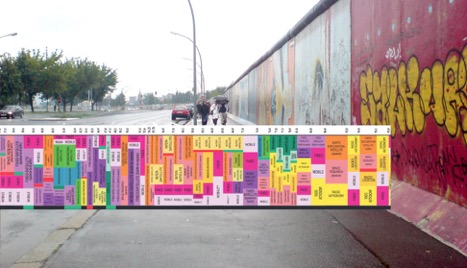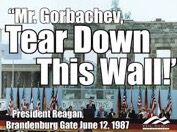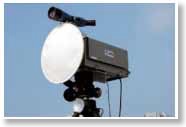Chmn. Wheeler, Tear Down This 95 GHz Wall!

On October 17, FCC will consider a millimeter wave (mmW) NOI that will be the first major mmW deliberation there in more than a decade. mmW is sometimes called the “spectrum frontier” and is the upper end of radio spectrum that is enabled by breakthrough technology. Indeed, a major motivation for the NOI is that the work of Ted Rappaport of NYU and others has shown that mobile use above 24 GHz is practical.
(Your blogger recalls that in the early 1980s when Motorola was pushing for more Part 90 sharing of UHF TV spectrum - an action that indirectly resulted in DTV due to an NAB backlash - Motorola and others claimed land mobile above 1 GHz was physically impossible!)
Description of 10/17 NOI from FCC Tentative Agenda
Due to military R&D, US firms are the leaders in basic mmW technology, but commercial mmW applications lag in part due to outdated FCC policies and the general procedure of FCC to wait for petitions its in inbox. Does FCC really think that it is easy to raise capital for moving technology from IEEE journals to the marketplace win part of the process is getting FCC to act on a rulemaking to permit the new technology? As part of my teaching last year, I asked 3 prominent communications attorneys in DC how long they thought it would take for FCC to act on approving a new technology using the verging spectrum above 95 GHz. The answers were all in the 3-5 year range!
This is not how we facilitate US technological competitiveness and economic growth. The roots of Wi-Fi and Bluetooth was a policy of FCC Chairman Ferris, later supported by Chairman Fowler, that FCC should identify promising technologies held back by anachronistic FCC policies and modify those policies to allow the technologies - with due deference to others who might be adversely affected - but not to require the new technologies. Indeed, Qualcomm cofounder Andrew Viterbi has said that the May 1985 FCC spread spectrum decision was important in enabling the final capital formation for the incorporation of Qualcomm 3 months later as it showed real FCC interest in CDMA which was then opposed by most mainstream industry players. (Cofounder Irwin Jacobs and the current Qualcomm management differ on this point and some others about the early company history.)

Now FCC has an analogous wall in spectrum policy at 95 GHz, depicted at the top of this post. While FCC (and ITU) has spectrum allocation up to 275 GHz, it has no unlicensed or licensed service rules above 95 GHz, a point reached in October 2003. At left is a Japanese 125 GHz system used at the 2008 Beijing Olympics in quantity for moving view from stadiums to the broadcast center. Use of similar technology is not permitted under current FCC Rules! So is it surprising that despite US leadership in millimeter wave components no such systems are being made in USA?

Above is a diagram of a German 237 GHz System exceeding 100 Gbits/s. Not only is its sale and use illegal in USA, but such an experiment probably could not have even been authorized due to the recent glitch in §5.85(a) that came about in the Report and Order of Docket 10-236 that for the first time forbids all experiments in passive bands. This change was made without any explanation and without any supporting comments. A timely filed Petition for Reconsideration on this issue has received no objections in more than a year and is supported by others, yet the matter is still unresolved at FCC. (Note, if FCC can not complete the whole reconsideration order on this docket in a timely way, it could at least issue a public notice announcing an interim liberal waiver policy for mmW experiments that impinge on passive bands based on whether there will actually be interference at the place and time of the experiment and NTIA - home of “spectrum sharing is the new normal” - could say that it supports such a policy as all such bands are G/NG shared.)
So here is what we urge FCC to do at the 10/17 meeting:
- Make clear in the NOI that the wall at 95 GHz is not intentional and is not a fundamental barrier to any proposed mmW uses.
- Make clear that despite theTentative Agenda description given above for the NOI that FCC is open to consider all uses of spectrum in the mmW bands, fixed, mobile and others and promises timely consideration of new proposals in order to support US competitiveness in mmW technology




![Validate my RSS feed [Valid RSS]](valid-rss-rogers.png)

